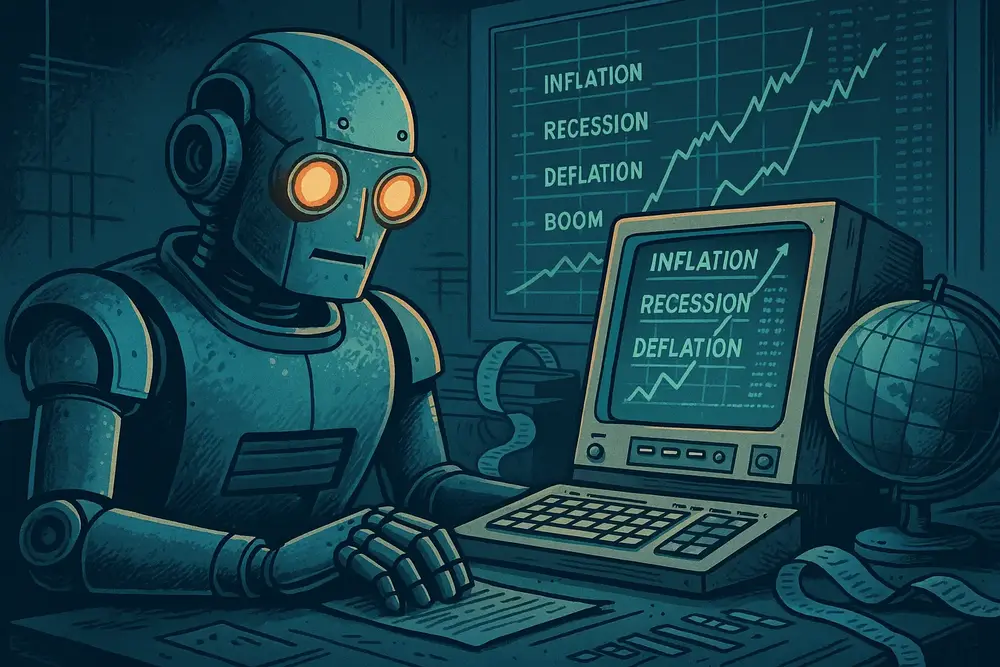Introduction
Economic conditions shape not only national policies but also personal financial decisions. From inflation to depression, each phase of the economic cycle influences asset performance, consumer behaviour, and global trade.
This guide explores 10 significant economic situations, highlights which asset classes perform well in each, and includes recent real-world examples. Whether you’re an investor, student, or simply curious, this article offers a clear roadmap through the most critical macroeconomic trends.
1. Inflation
Definition: A sustained increase in the general price level.
Best Asset Classes:
- Commodities (e.g. gold, oil)
- Real estate
- Inflation-linked bonds
Recent Example:
Bolivia (2025) – Soaring inflation due to fuel shortages and dollar scarcity. Food inflation hit 17%.
Source – Reuters, April 2025
2. Deflation
Definition: A decrease in the general price level, increasing purchasing power.
Best Asset Classes:
- Government bonds
- Cash
Recent Example:
China (2024–2025) – Consumer prices fell for two years, signalling a deflationary cycle.
Source – Bloomberg, March 2025
3. Disinflation
Definition: A slowdown in the rate of inflation.
Best Asset Classes:
- Equities
- Long-duration bonds
Recent Example:
United States (2022–2024) – Inflation eased without increasing unemployment.
Source – St. Louis Fed, 2024
4. Reflation
Definition: Economic policies aimed at stimulating inflation and growth after a downturn.
Best Asset Classes:
- Cyclical stocks
- Commodities
- Small-cap equities
Recent Example:
Eurozone (2021–2023) – Post-COVID stimulus and central bank easing led to moderate reflation.
5. Stagflation
Definition: Slow growth, high inflation, and high unemployment.
Best Asset Classes:
- Commodities
- Real assets
- Inflation-linked securities
Recent Example:
United States (2025) – Cost-driven inflation and weak growth raised stagflation fears.
Source – Fortune, April 2025
6. Recession
Definition: Two or more consecutive quarters of negative GDP growth.
Best Asset Classes:
- Defensive stocks (utilities, healthcare)
- High-quality bonds
Recent Example:
Germany (2023–2025) – Industrial slowdown and trade tensions pushed Germany into recession.
Source – Reuters, April 2025
7. Depression
Definition: A prolonged and severe economic downturn.
Best Asset Classes:
- Government bonds
- Cash
- Consumer staples
Recent Example:
Japan (2024) – Falling exports and price deflation deepened Japan’s recession.
Source – Yahoo Finance, 2024
8. Hyperinflation
Definition: Extremely high and rapidly accelerating inflation.
Best Asset Classes:
- Foreign currency holdings
- Tangible assets (e.g. real estate, gold)
- Crypto (selectively)
Recent Example:
Venezuela (2024) – Annual inflation reached 71.7%, continuing a long trend of monetary collapse.
9. Boom / Expansion
Definition: A phase of rapid economic growth and rising output.
Best Asset Classes:
- Equities
- Real estate
- Growth stocks
Recent Example:
India (2023–2025) – High growth in tech and services drove expansion.
10. Economic Shock
Definition: A sudden, unexpected event that disrupts economic stability.
Best Asset Classes:
- Gold
- Safe-haven currencies (USD, CHF)
- Defensive equities
Recent Example:
Russia (2022) – The invasion of Ukraine triggered a global financial shock and investor retreat.
Frequently Asked Questions (FAQ)
Economic Conditions
Inflation is moderate and manageable; hyperinflation is extreme, often above 50% per month.
Yes. Defensive sectors and government bonds often outperform. Strategic investors may also short certain assets.
Not always, but prolonged deflation can stall economic activity and harm earnings.
Commodities, gold, and inflation-linked bonds are classic stagflation hedges.
With rate cuts, bond purchases (QE), and fiscal stimulus to revive demand.
Conclusion
Understanding economic conditions isn’t just for economists—it’s crucial for investors, policymakers, and financially aware individuals. Recognising how each phase impacts markets allows for more intelligent decisions, better risk management, and timely investments.
Whether you’re facing stagflation or a boom, staying informed and adaptive is your best investment strategy.




